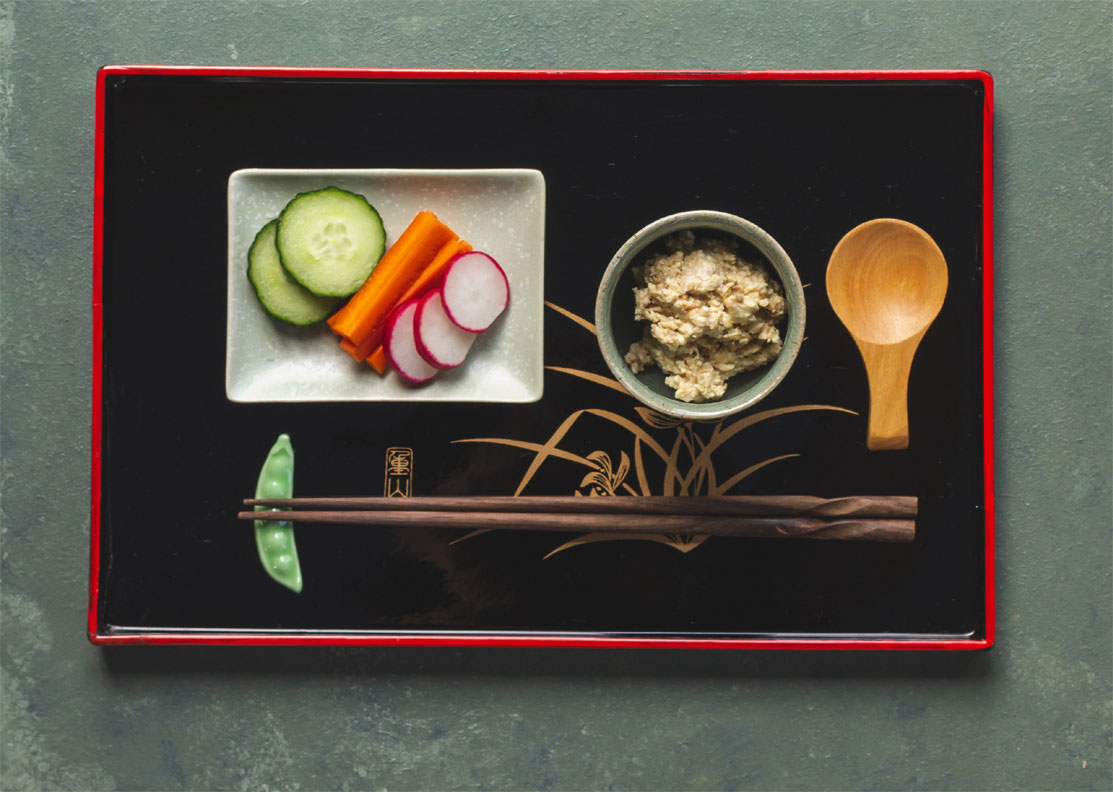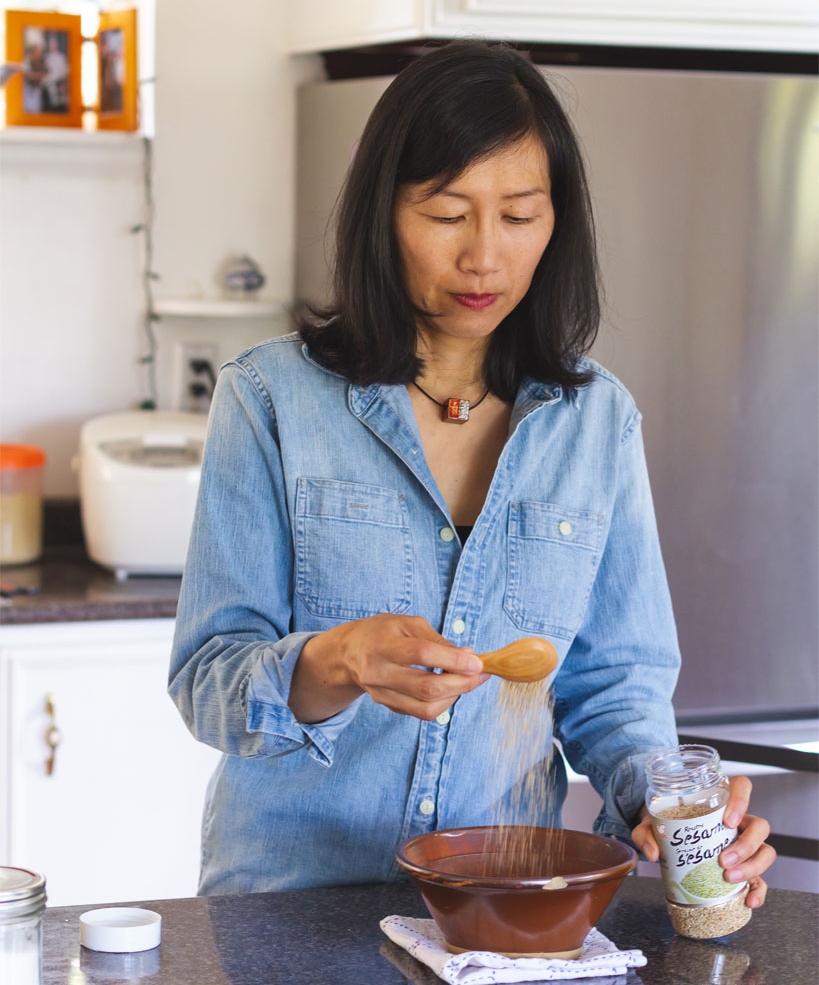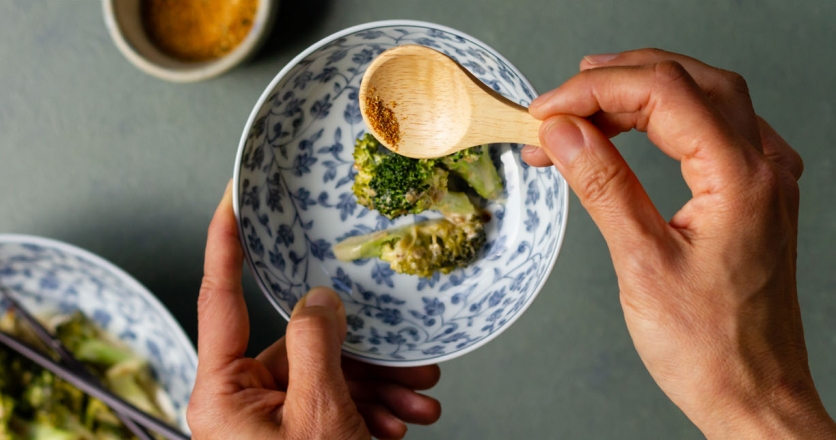Japanese Fermentation
Fermented foods are among my great memories from growing up in Japan. They were one of the kisetsu no teshigoto (季節の手仕事), which translate as “seasonal chores” but were really more fun than that makes it sound. Fermentation was part of our way of life. Each time of year brought a new ingredient or dish to tackle.
In the spring, my mom used to make sushi ginger (pickled young ginger). Summer was time for umeboshi (pickled plums), umeshu (plum wine), and rakkyo (pickled garlic bulbs). Winter meant takuan (pickled daikon radish) and kimchi (fermented cabbage). We always also had a “nuka bed” of fermented rice bran, used to make pickles. The pot of nuka was stored in a cool corner of our kitchen, and throughout the year a rotation of fresh cucumbers and other vegetable would go in, and yummy nukazuke pickles would come out a few days later.
I can’t remember all the different types of pickles and preserves we had. Kimchi is originally from Korea but was definitely in our pantry, along with many traditional Japanese preserves. My mom was a modern working mother who somehow managed to cook and care for us and still make time for preserving and fermenting both traditional and modern foods. They were all delicious, but I didn’t realize at the time that the fermentation processes also have benefits for our health.
Fermented or preserved foods were always on our dinner table—pickled vegetables and preserved fruits being the most common. A Japanese traditional meal calls for ichijyu sansai, which means one soup and three dishes. Of those, one is the main course and for the two side dishes there is always rice and tsukemono, or pickled vegetables. Wakayama prefecture, where I grew up, is well known for plums, so my mom’s homemade umeboshi was always on our dinner table.
Each household has its own traditional recipes for particularly special items such as miso soup. The use of fermentation varies from house to house, and in older villages, things like a successful nuka bed are still passed between generations, much the same way I imagine a small container of starter for making bread would have been passed from mother to a daughter moving out of the family farmhouse in the years before refrigeration.
Around our house in the village where I grew up, bunches of daikon radish would hang to dry on laundry poles before becoming pickled radish. When plums were in season, umeboshi would be set out to dry on garden stones in the sunlight.
My mom still makes many of these treasures when she can, and stores them in a cool room out back in the same house where I grew up. There are jars of umeboshi with beautiful purple-red shiso leaves, preserved kinkan (kumquats) from their garden, and other wonderful things. She carefully handwrites each label on a piece of paper and tapes them onto jars. I am so happy to taste her preserved food whenever I visit my parents, and she often packs a few special jars for me to take home.
When I am feeling sick or don’t have an appetite, I make Japanese rice congee and eat it with my mom’s umeboshi. The pickled plums she makes every year have a flavour that is much more sour than some of the store-bought ones, and my sons, who grew up with my mother’s umeboshi, know the real thing. It makes me so happy.
Last summer, I was lucky to get some organic Japanese plums called aoume (young green plums) from a friend. I made ume syrup from only the plums and a little honey. It takes a little work to prepare aoume for making syrup: removing brown spots and bruises from their skins, gently removing any remaining stem material with a toothpick, and scoring the ume with a fork. Then finally, you are ready to combine the fruit with honey in a clean jar.
I stored the jar in a dark cool spot for three months, and when I opened it and smelled the syrup, I reacted with a big smile. The smell was just as I remembered. I can’t explain it with words, but it’s the aroma that I grew up with; every hot summer at my house, I enjoyed it with cold water and ice. I shared some of the syrup I’d made with a few Japanese friends who live here in Canada and they all remembered the taste from their childhoods. (懐かしい味) “Natsukasii aji”—“That taste brings back memories.”
We all have childhood memories of food, whether dill pickles or preserved peaches or homemade jam, and I think it is meaningful to pass these traditions to the next generation. Today, with our busy lifestyles and convenience foods, unfortunately we sometimes forget about these valuable and wonderful things. I am so happy to see fermentation becoming popular again.
Fermenting takes time and care, but it is hugely rewarding. When I ferment, I think about lots of things, about people from the old days, my mom, and my childhood memories. I learn to slow down and enjoy the moment.
For many people, fermentation is a little intimidating, but actually the process has been part of human life longer than many realize—ever since humans started to raise crops and vegetables. In the days before refrigeration, everybody did it as a matter of course. Try to make one thing at a time. I was one of the doubters, but just a few years ago I started by making my own miso paste, nuka bed, kimchi, and more. I enjoy eating and sharing them, but I also enjoy the time and focus spent making them. I have gained an even greater appreciation for food—and fermented and preserved foods.
Story by Kimiko Suzuki.
Broccoli Miso
Serves 4–6 as a side dish
1 broccoli crown (about 1 lb), cut into bite-sized pieces
1½ tablespoons of your favourite miso paste
4 tablespoons mayonnaise
Shichimi Togarashi (seven chilies, a spice mix available at Fujiya and other specialty supermarkets)
Preheat oven to 400°F.
In a medium bowl, mix the miso and mayonnaise.
Add the broccoli to the miso mayo and coat well.
Transfer the broccoli to a casserole dish.
Bake in the oven for about 10 minutes. Stir well to mix coating through the broccoli, then continue baking for another 10 minutes, until golden brown and tender, according to your preference.
Sprinkle with Shichimi Togarashi, and serve.
Tofu Power dip
200g medium tofu
4 tablespoons sesame seeds, toasted and ground
2 tablespoons of your favourite miso paste
2 teaspoons sugar
Fill a small pot with enough water to cover the tofu. Bring to a boil.
Tear tofu into 5 or 6 pieces and add to the pot. Boil for about 2 minutes and drain. Set it aside to cool.
Place the tofu, sesame seeds, miso, and sugar in a small bowl. Mix well.
Serve with your favourite vegetables.






